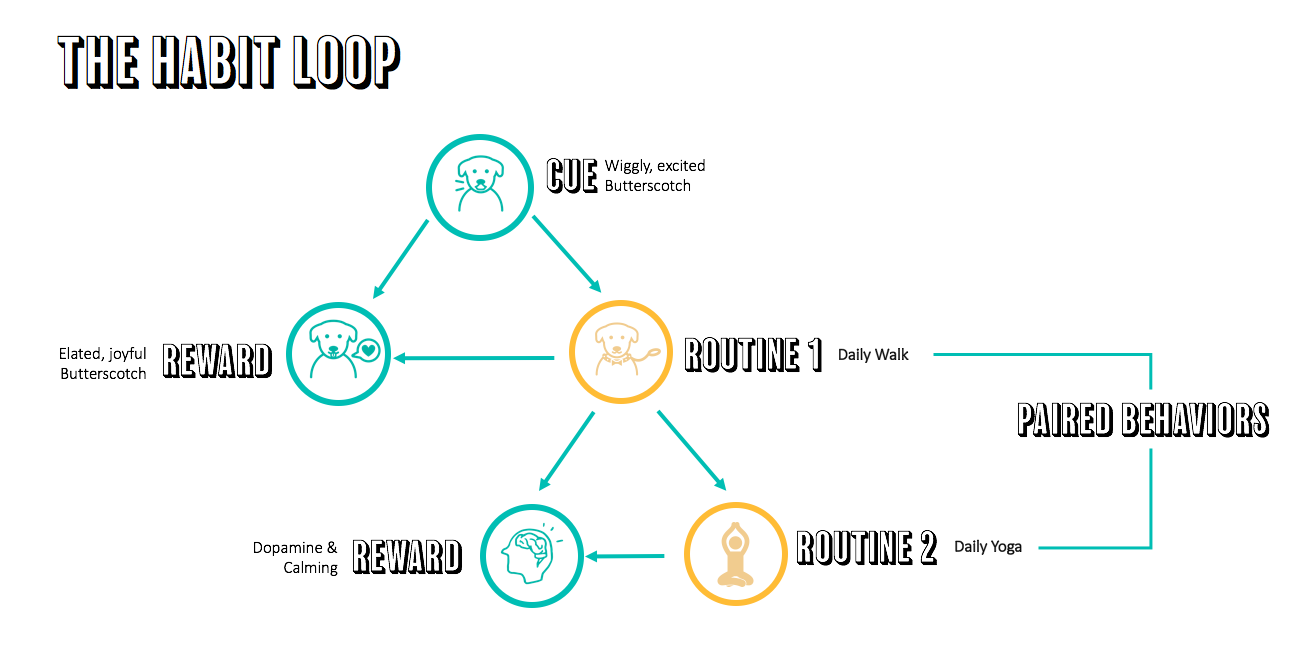Around 5:40 am on a Sunday morning, more than an hour before sunrise, I found myself trudging, bleary-eyed, through the snow. A weak headlamp and one enthusiastic bounding dog guided me (with a second dog not far behind, conserving energy in my snowshoe tracks).
Although I always take a morning walk with my dogs, this morning’s walk was earlier than usual. Why? I had a looming family travel deadline of 9 am. To depart on time, I built in about 45 minutes for the walk (suiting up is an effort all its own) plus, I made sure to allow time for my daily 1.5 hours of yoga. I easily could have sacrificed either the walk or the yoga for more sleep, so, you might ask, why the urge to fit it all in?
As I watched my dog vault through the snow, burrowing her nose through the powder, rolling, leaping, and crashing through the woods, I realized a very important truth about the real reason I stick to my routines. It isn’t extraordinary self-discipline. In reality, it is joy that keeps me consistent with my habits. Both Butterscotch’s unbounded joy at playing in the snow and the joy I have watching her. Cutting the walk short in favor of sleep or holiday pancakes hadn’t crossed my mind; how could I curtail one of the most joyous moments of our day?
Over two years ago, I felt compelled to start a daily yoga practice. That dark, early morning, I realized my yoga practice wasn’t built in isolation. Actually, it came on the back of another established morning routine—waking up to a very excited wiggly dog and bringing her out for a nice long walk. Her joy got me out of bed, and I was able to link the energy of that routine to making it onto my yoga mat.

Ultimately, it was the joy of the practice – the movement, the (pop) music, and the warmth of an electric space heater that kept me there. A sense of discipline? Not so much. External rewards like gold stars or cookies? Nope.
And so, just in time for New Year’s Resolution season, I bring up Butterscotch and our morning walks to illustrate two things:
A) JOY is one of the most overlooked key “ingredients” for maintaining a daily practice; and
B) One successful habit (my walks) can springboard other habits (my yoga practice).
Habits based solely on obligation and discipline can easily fall by the wayside when the pleasures of coffee and breakfast – or the anxiety of your inbox or crammed meeting calendar – loom before you.
In behavioral science terms, there are a few habit mechanisms at play here: (See image below)
- The “rewards” in the Cue–>Routine–>Reward cycle:
- Butterscotch’s infectious joy while walking
- The brain’s dopamine release from physical activity (walk, yoga movement)
- The pleasure of a warm room and music (thank you, Spotify!)
- The “Strategy of Pairing” – when you connect two activities together to strengthen a habit (linking the walk to yoga)

This year, I’m working on a new work habit: taking some time out during the day to think about what’s gone well and express appreciation.
To hack this resolution, I need to think carefully about when in the day to add it and how to link it to something I already enjoy. For example, while putting it at the end of the day may seem natural because I could reflect on the entire day, I know from experience that the end of the day is not my strong point. But the middle of the afternoon – when I often take a snack break – makes a lot more sense, so I’ve decided to pair my new appreciation habit with the break time that I already enjoy. A little contemplation time, paired with something tasty, gives me a better chance of making it happen.
If you see me around, ask me how it’s going with my appreciation resolution (and maybe to see a few more pictures of Butterscotch). I would love to hear about your New Year’s Resolutions and the hacks you have found that make them successful.






